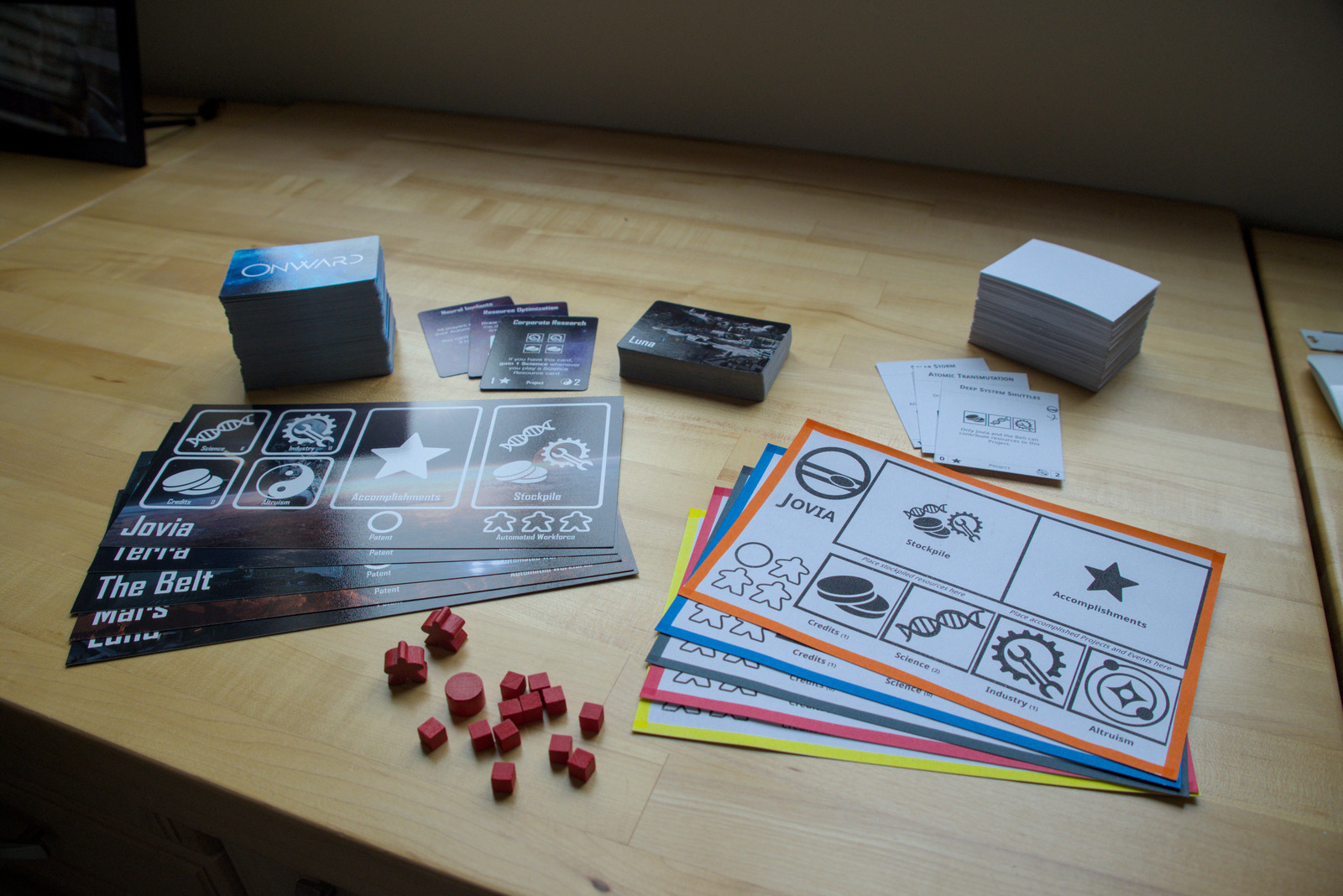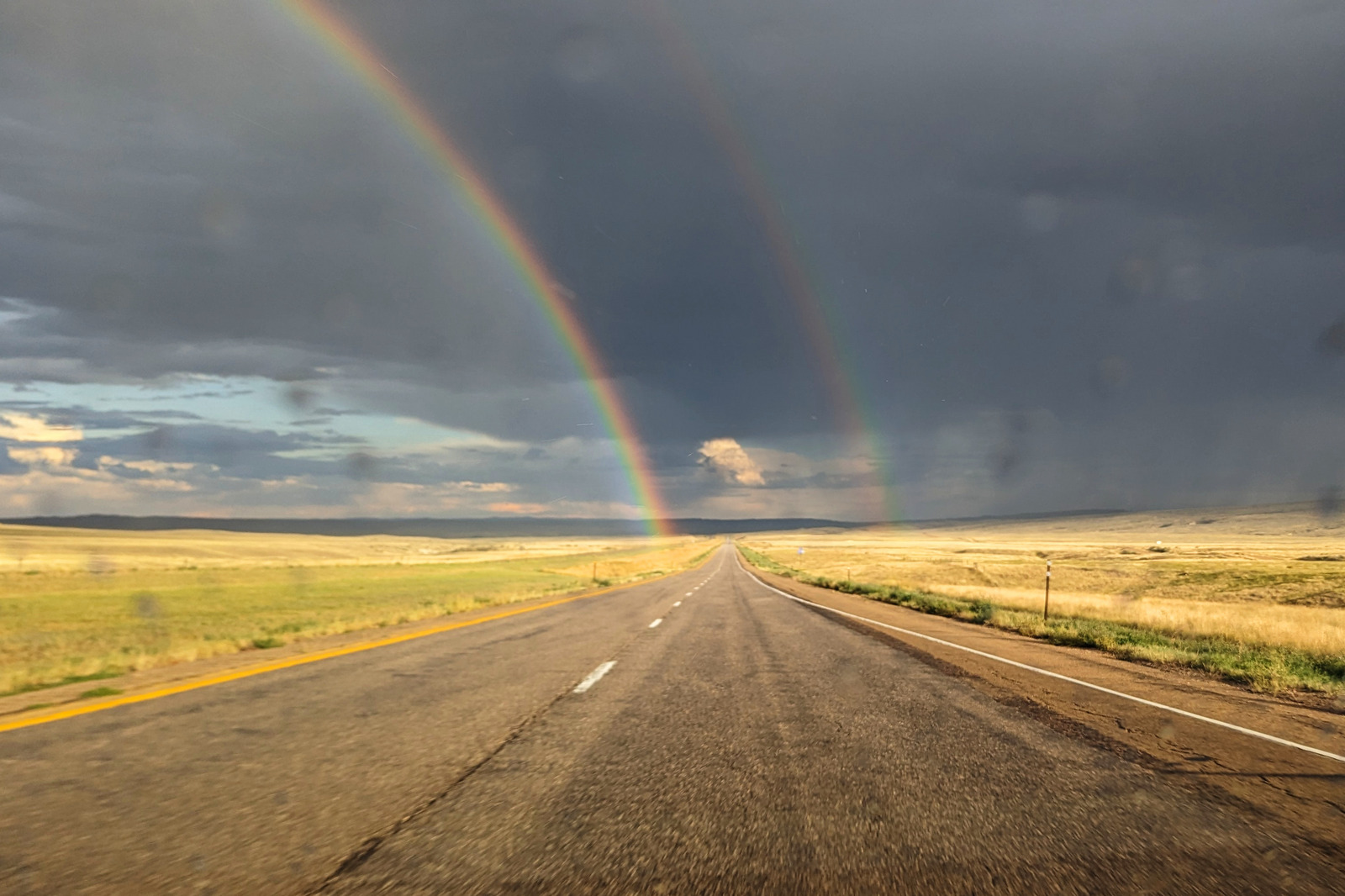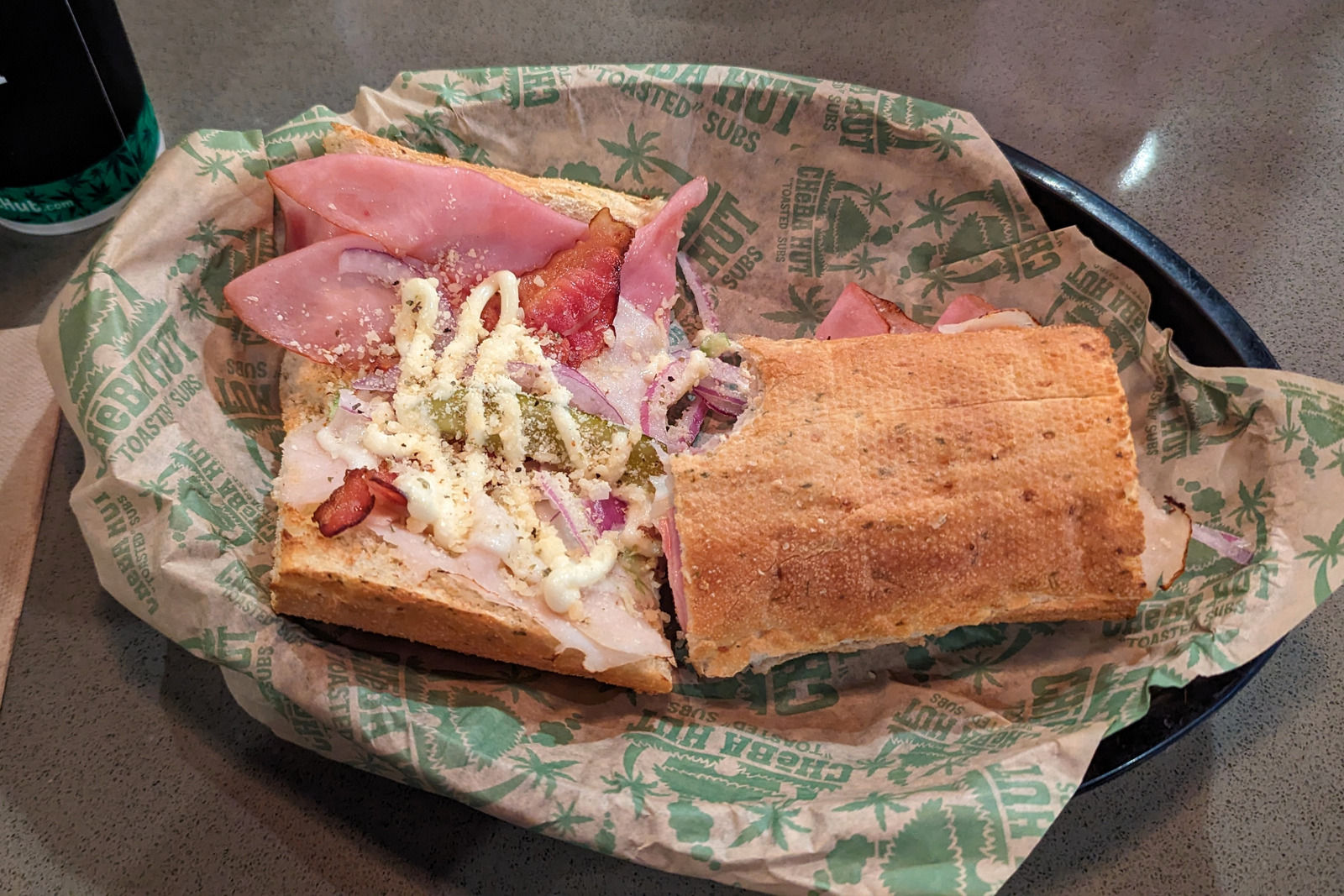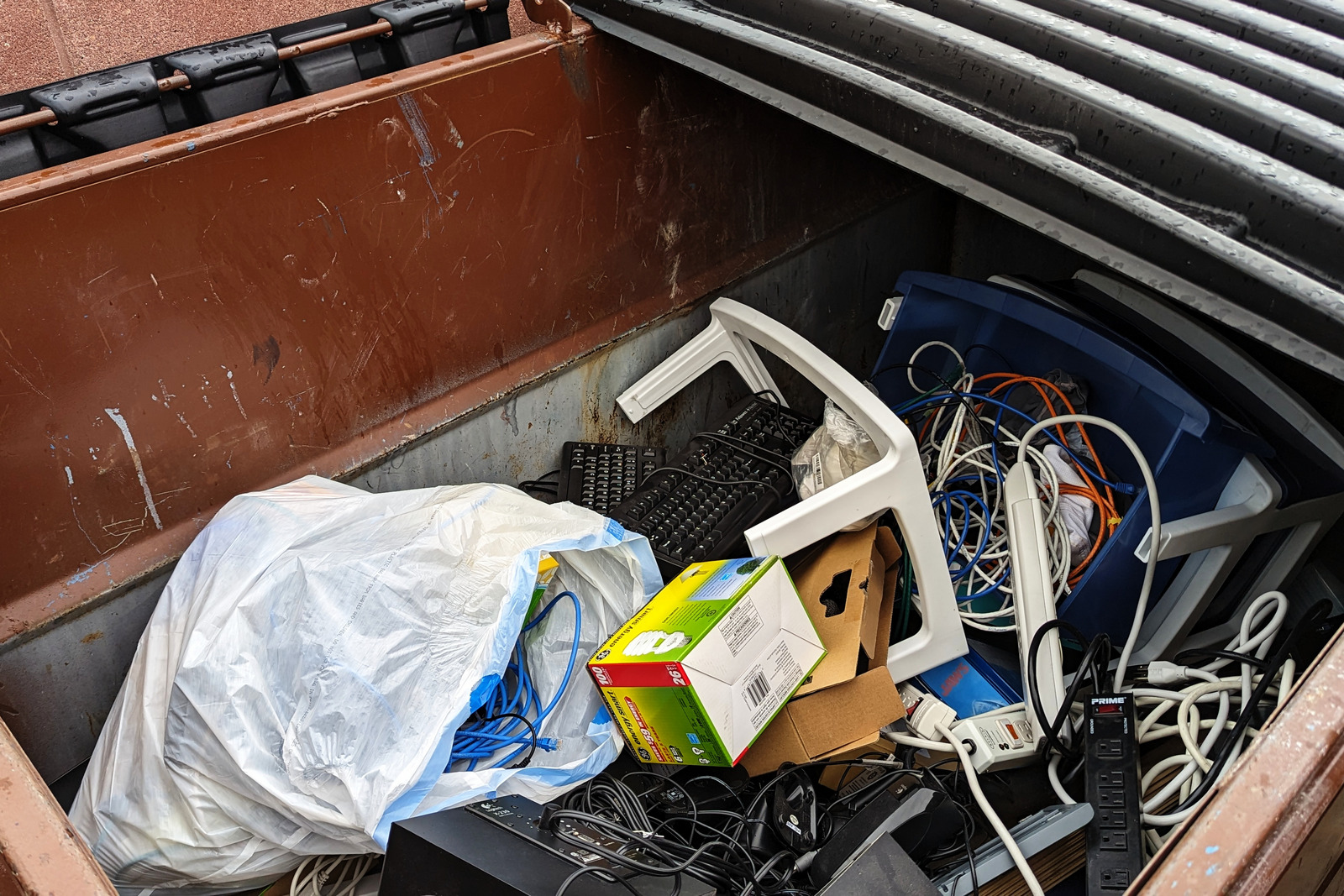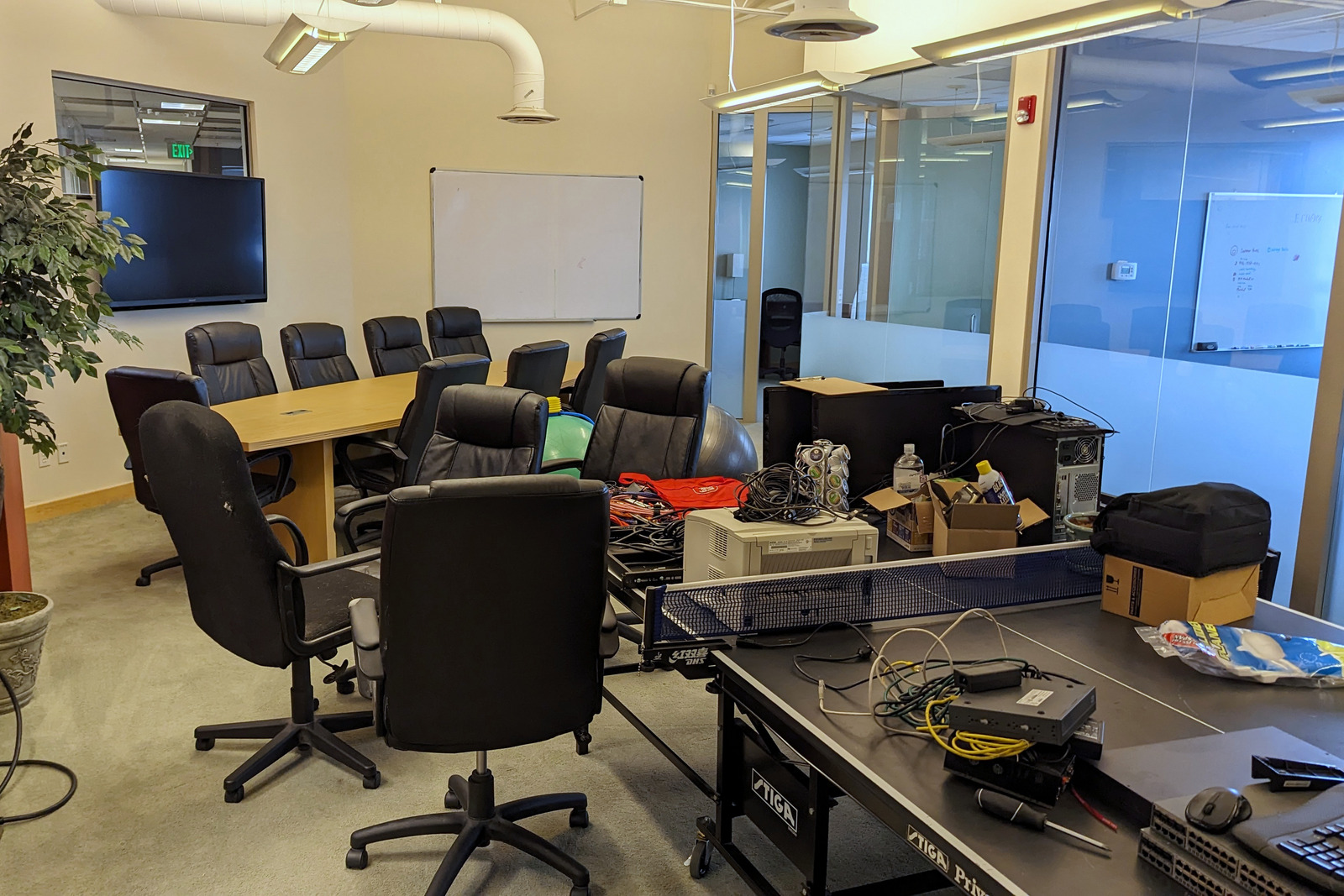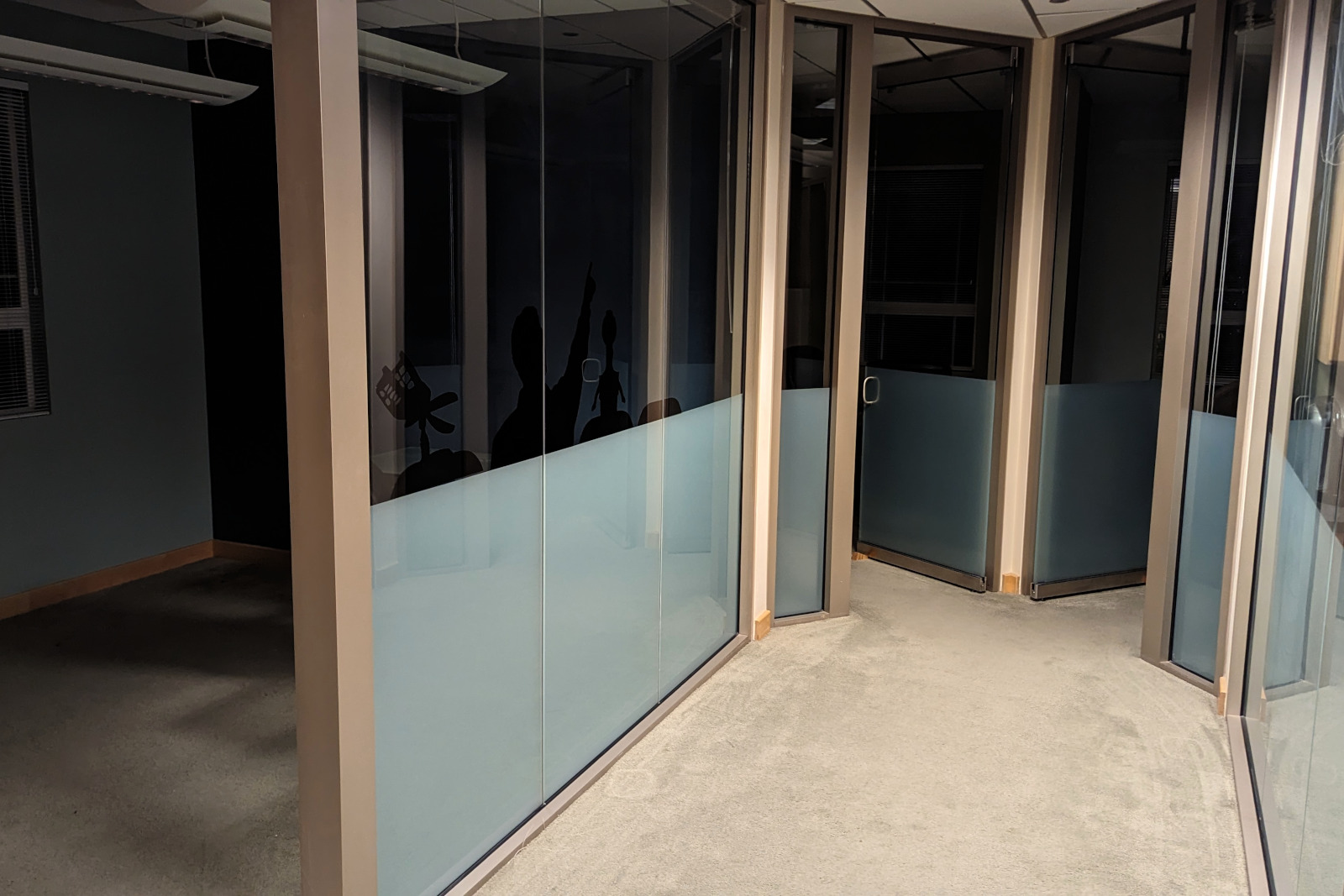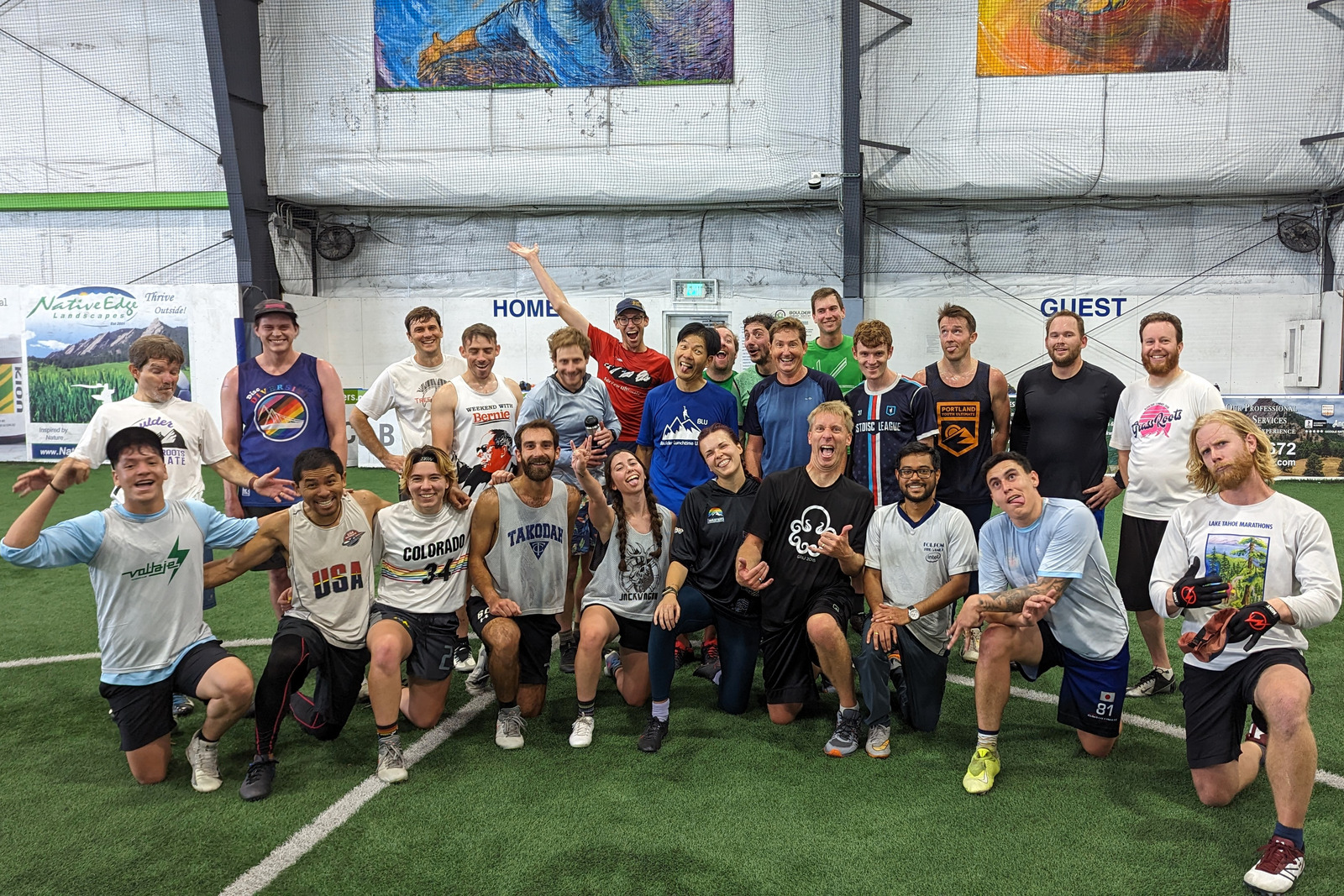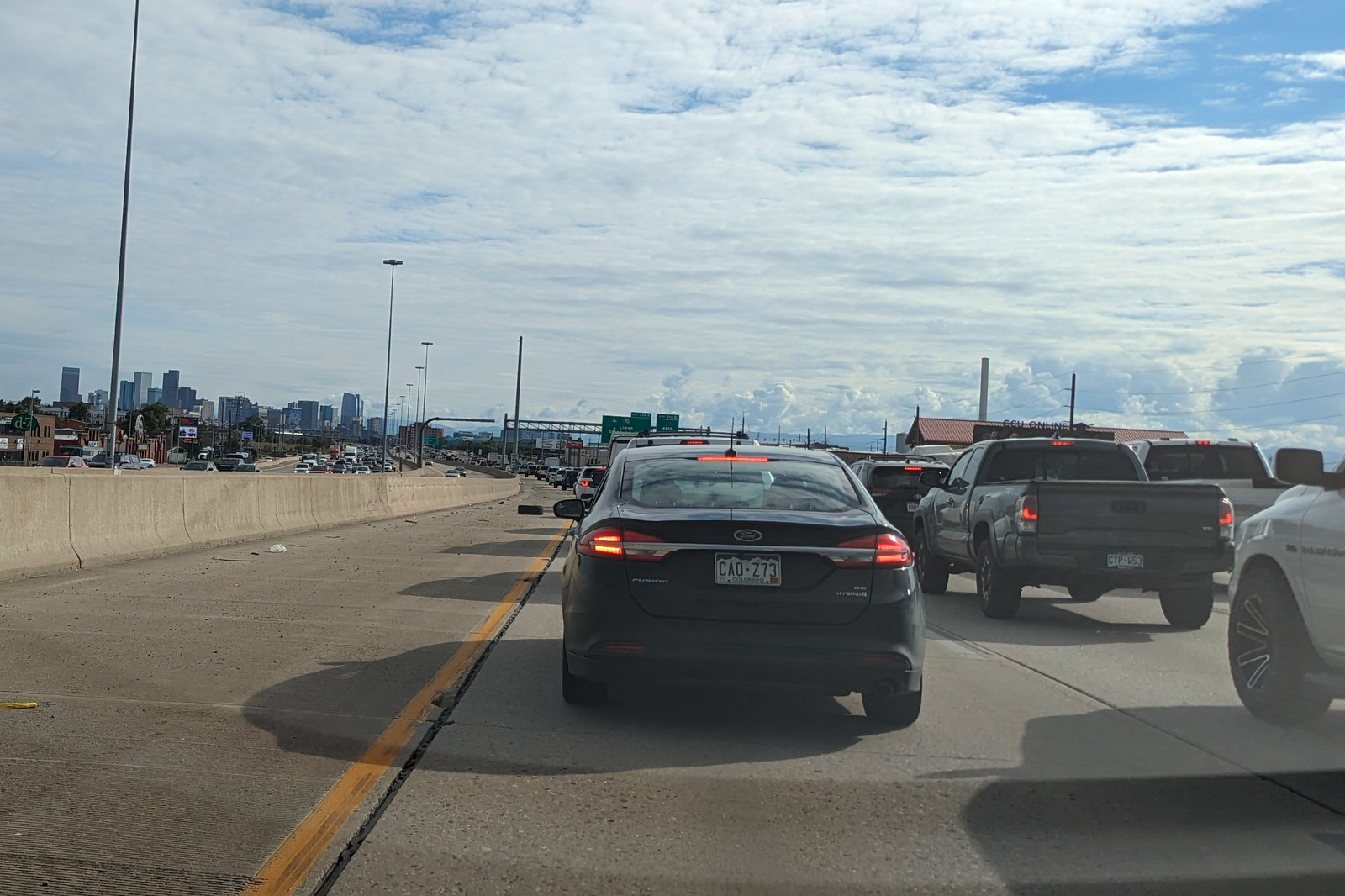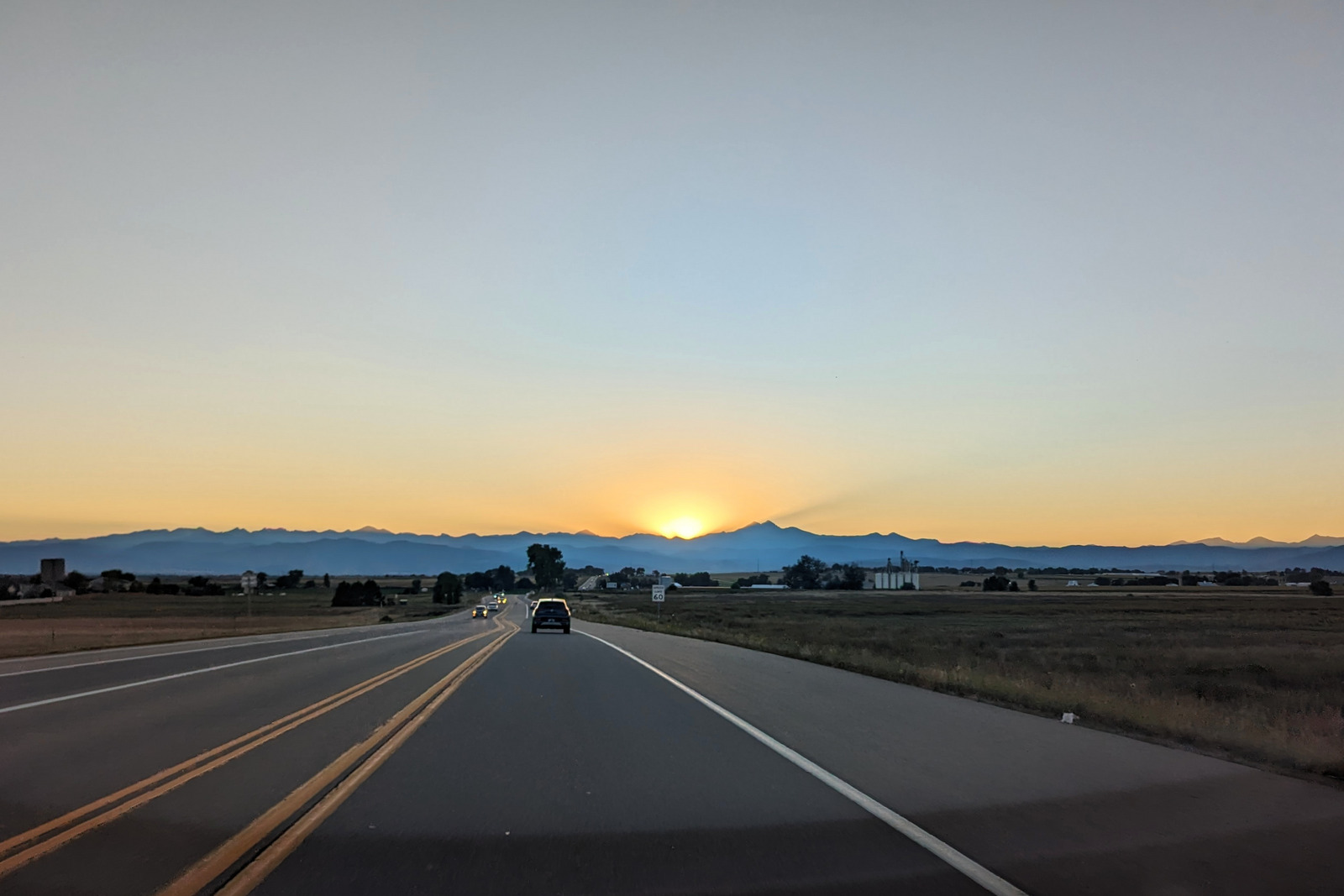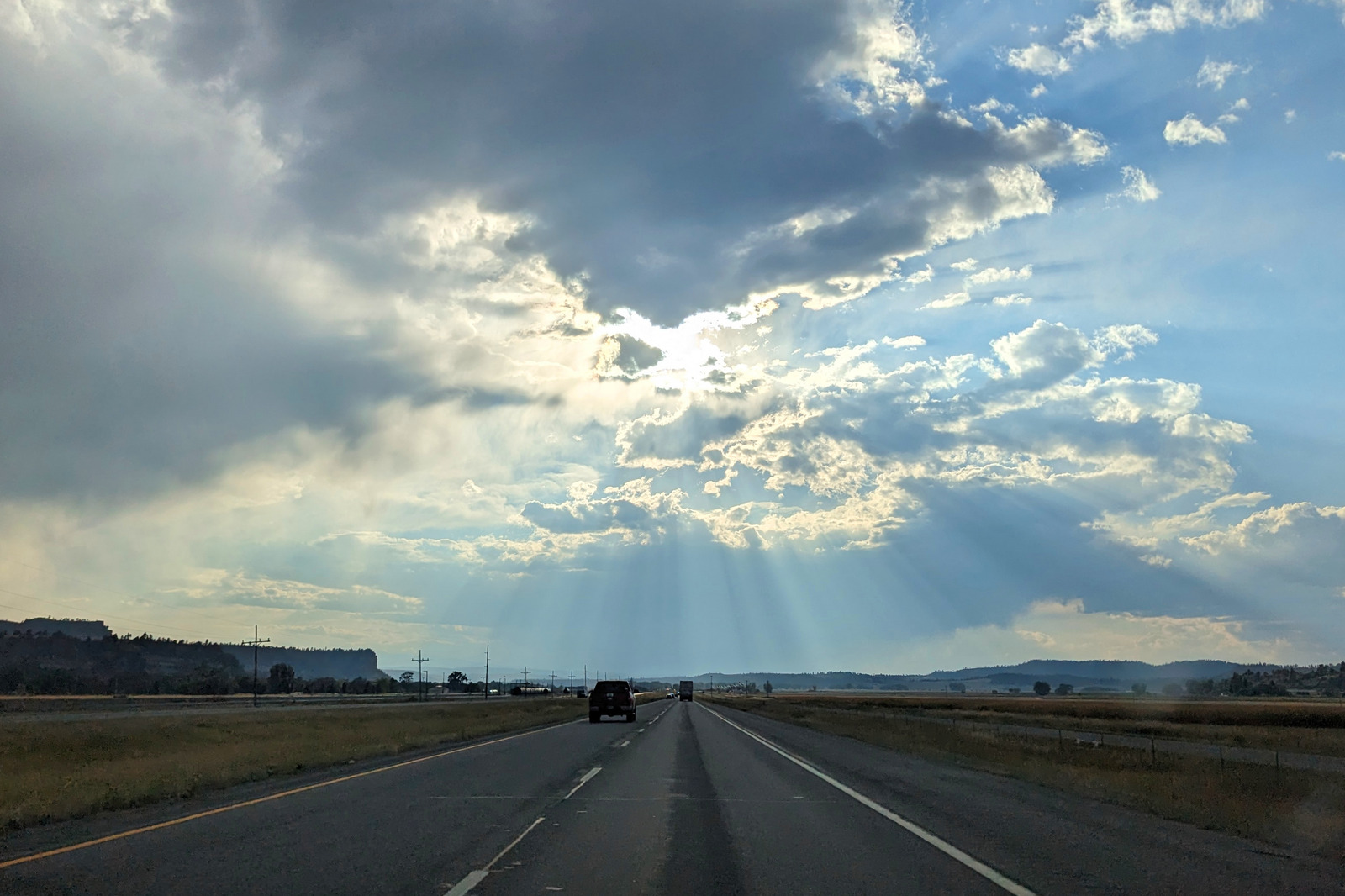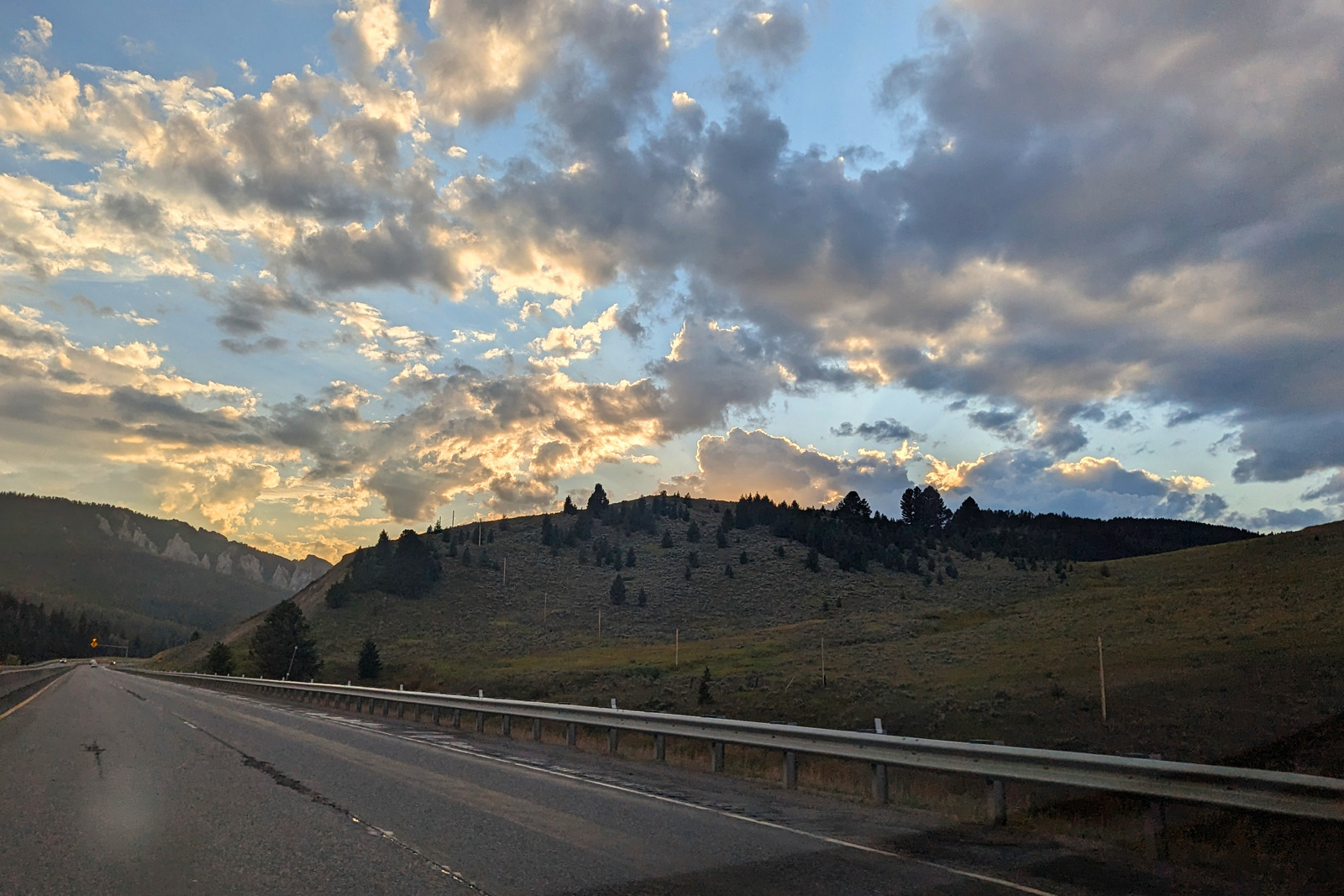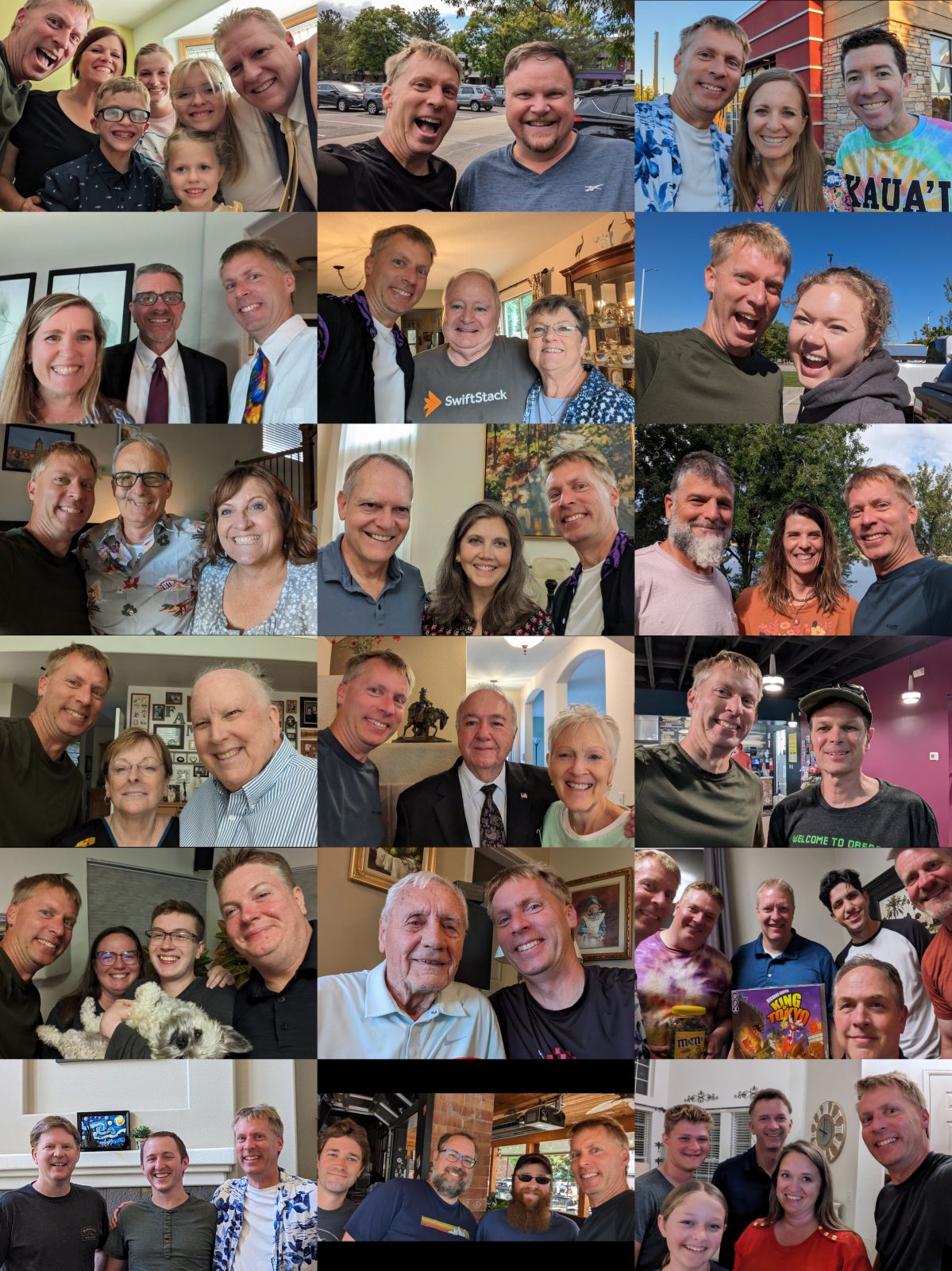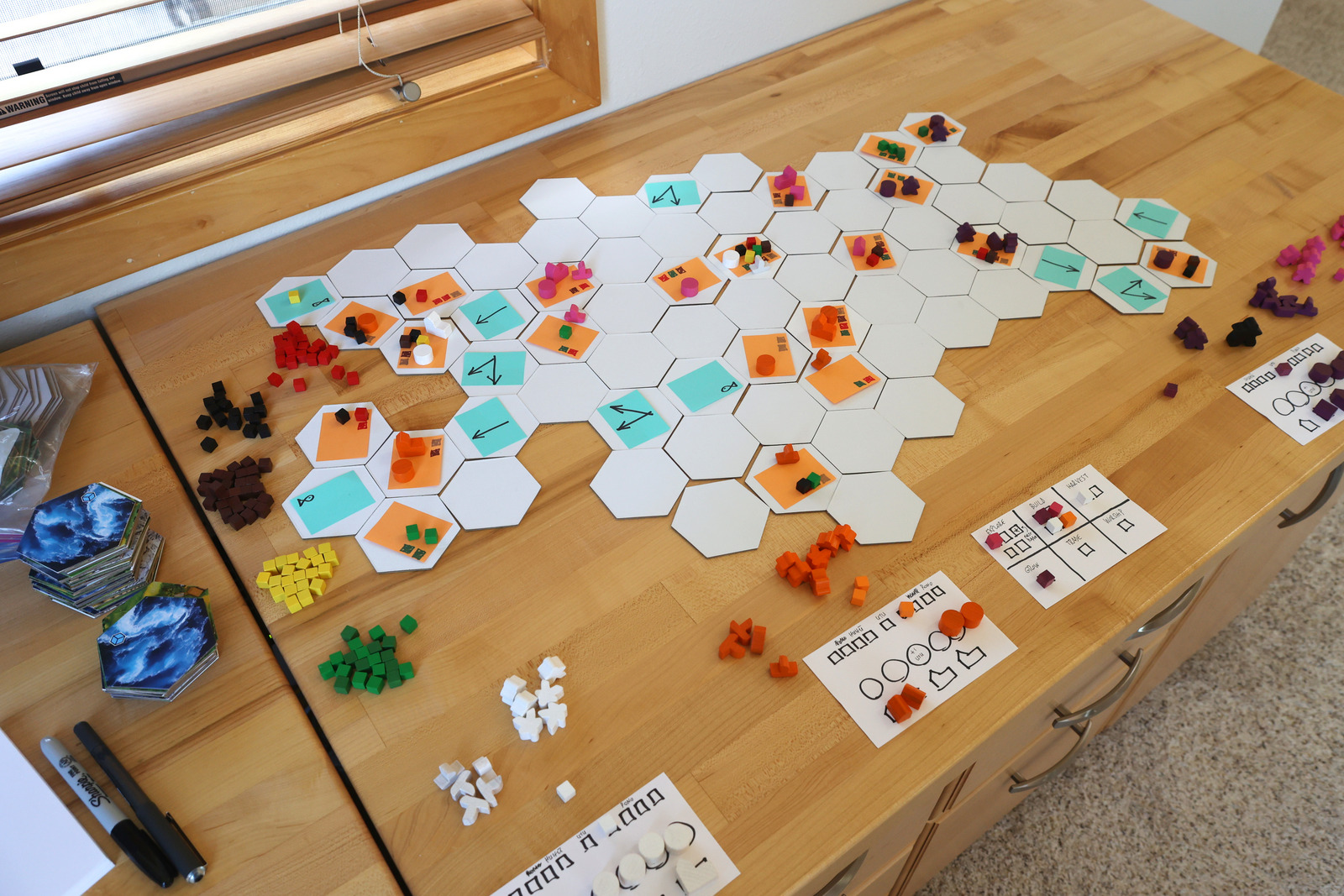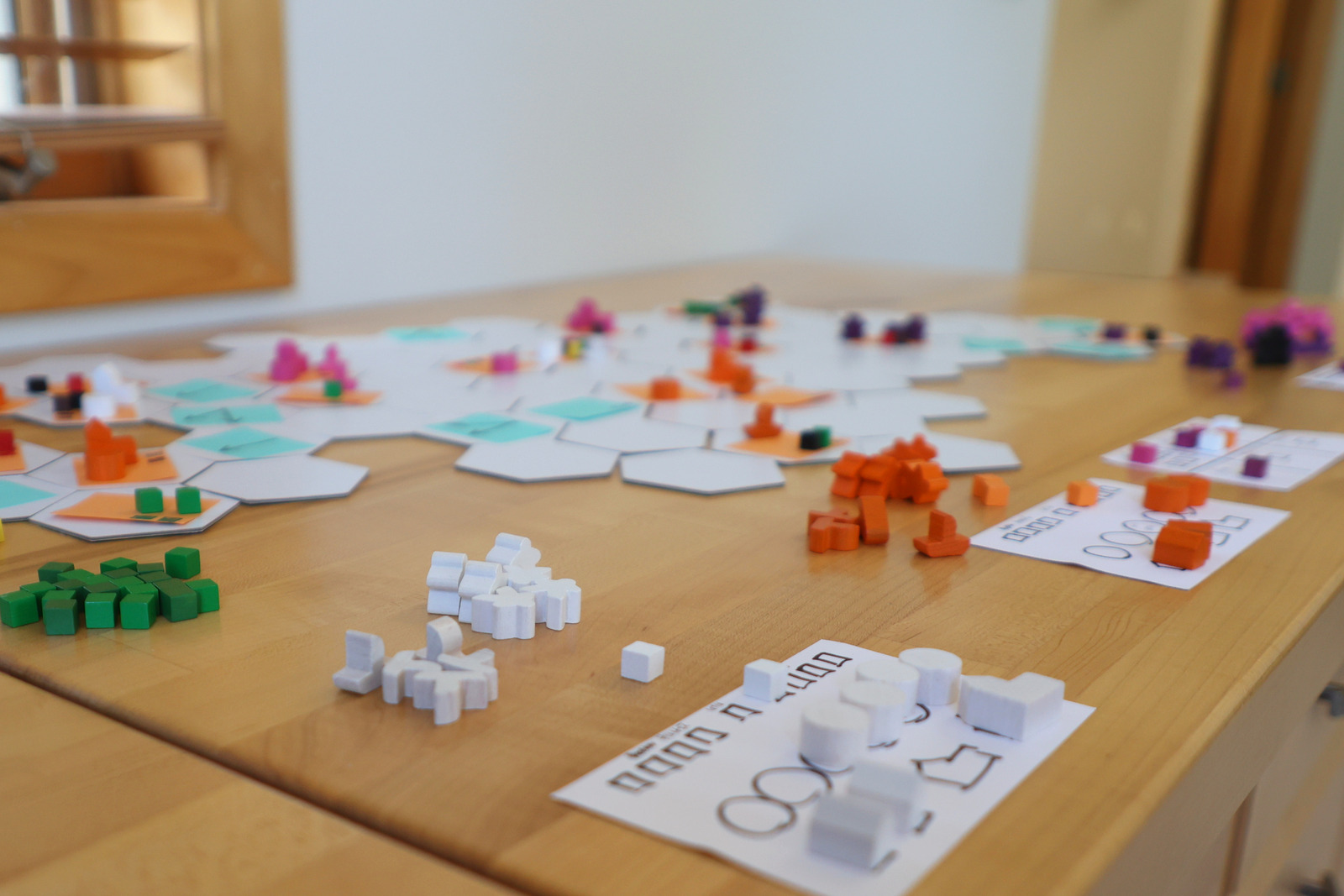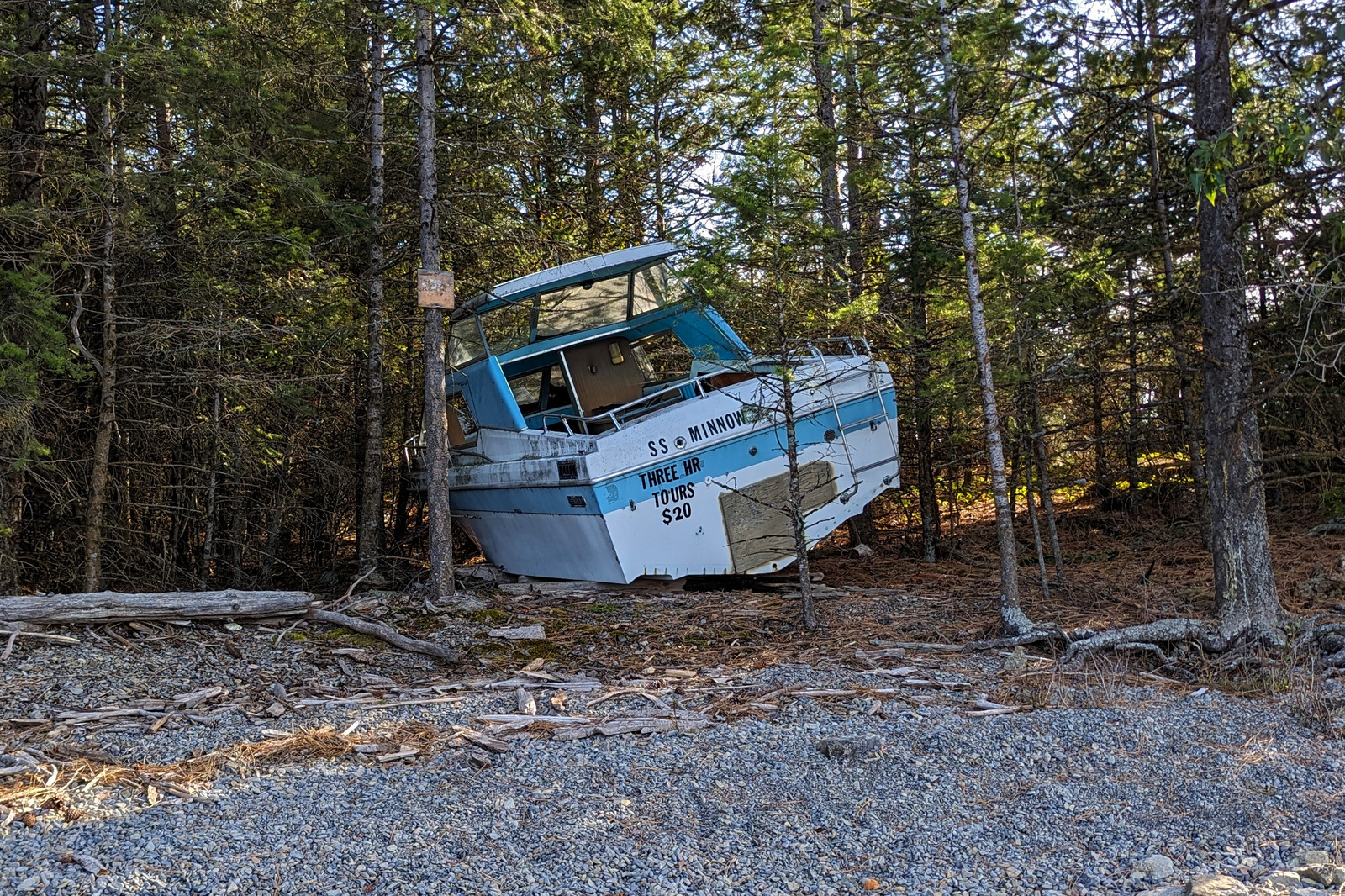Thom and I have been all over the West on our annual fall trips, but we haven’t yet been to the Sawtooth Range in central Idaho. It coincided neatly with a conference he was attending in Idaho, and it was a half-day drive for me, so we agreed to meet up at a pizza place in the bustling town of Stanley. And by “bustling” I mean the population is around 100, and there’s little more than a gas station, post office, and a smattering of small restaurants. We enjoyed some pizza before heading out on the trail.
Because we weren’t hiking until evening, we had to cover some distance quickly. The sun was already setting, casting a golden light over the mountains ahead.

As darkness fell and we realized we were still a few miles from our planned campsite, we decided to take a shorter route to a nearby lake and camp there for the night. Topographic maps are often deceiving because those little elevation lines don’t really give a good picture of how steep the terrain can be. Our headlamps illuminated the trail as we hiked endlessly uphill, but eventually the trail faded out and we found ourselves bushwhacking through the rugged forest. We referred to Thom’s topo map, comparing it with my GPS phone map, and felt like we were really close to our destination. But the rocks were steep, the creek was swift and wide, and the trees seemed unrelenting. We agreed to turn back and hope to find the trail again, and suddenly he exclaimed “Here it is!” Sure enough, we’d been right beside the trail without even knowing it.
We made our way up to the Saddleback Lakes and set up camp. The night was cold but clear, and we enjoyed some time sitting on the shore of the lake. The moon was nearly full, casting a fierce white light on everything.

I set up my little tripod and took a few night shots. Although the photo below looks like it might be dusk, it was quite dark. Cassiopeia hangs above the cliffs in the center:

The next day dawned cloudy and cold. The forecast called for nights in the 20s, and they were right. Of course there’s something magical about a cozy sleeping bag in a tent, even on the coldest nights. It’s getting up that’s hard. We surveyed the smaller lake in the morning light.
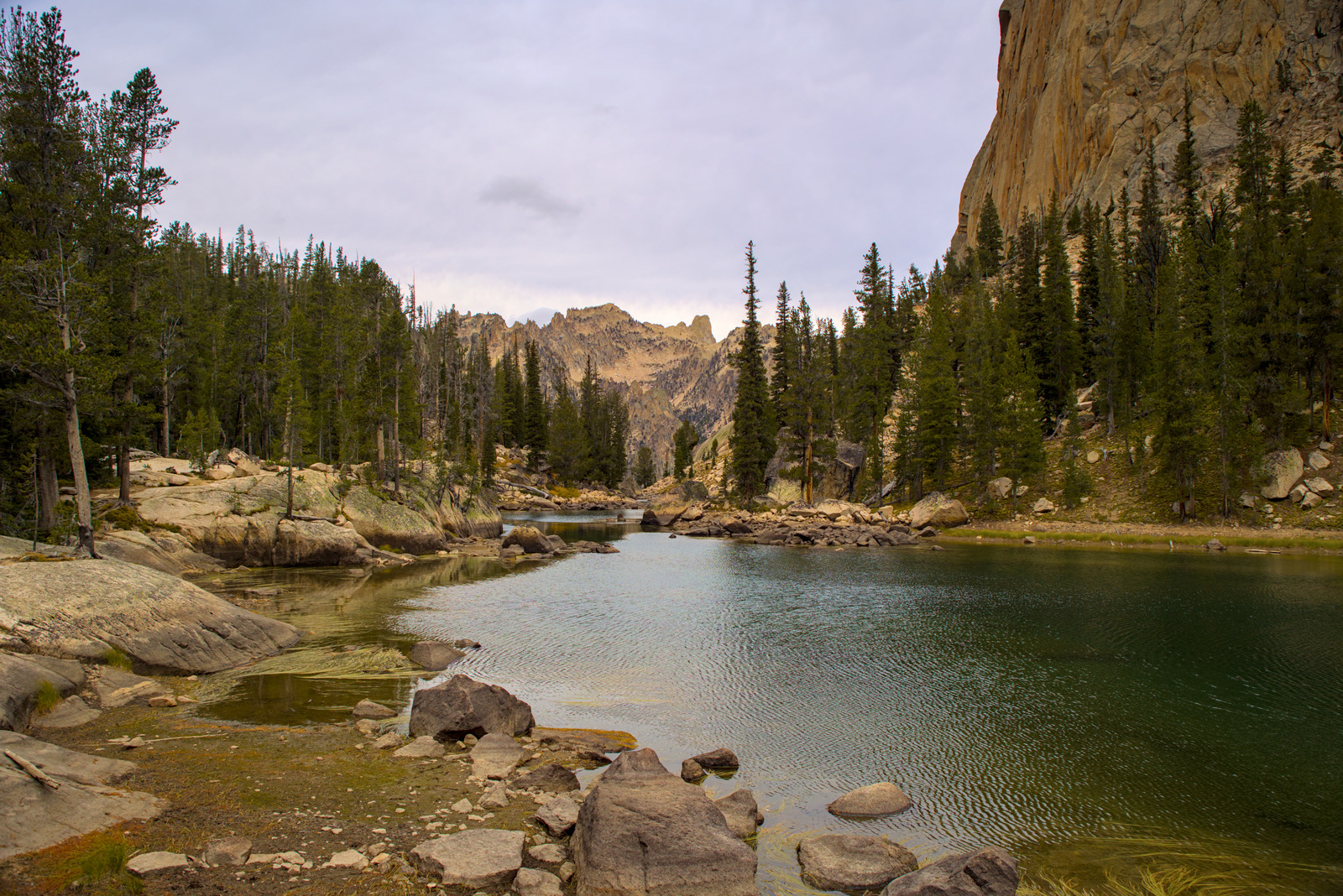
After a bit of breakfast, we cleaned up, hoisted our packs, and headed back down the steep mountain toward our next site. In daylight, the trail was really easy to follow! We laughed a bit about how tricky it had been the night before.
In the distance we could see the peaks of the Sawtooth Range. Our destination, Alpine Lake, was somewhere off to the right past the ridgeline.

After a few hours and a lot of switchbacks up the mountain, we arrived at Alpine Lake. The clouds cleared for a while, and the sun shone brightly over the frigid water.
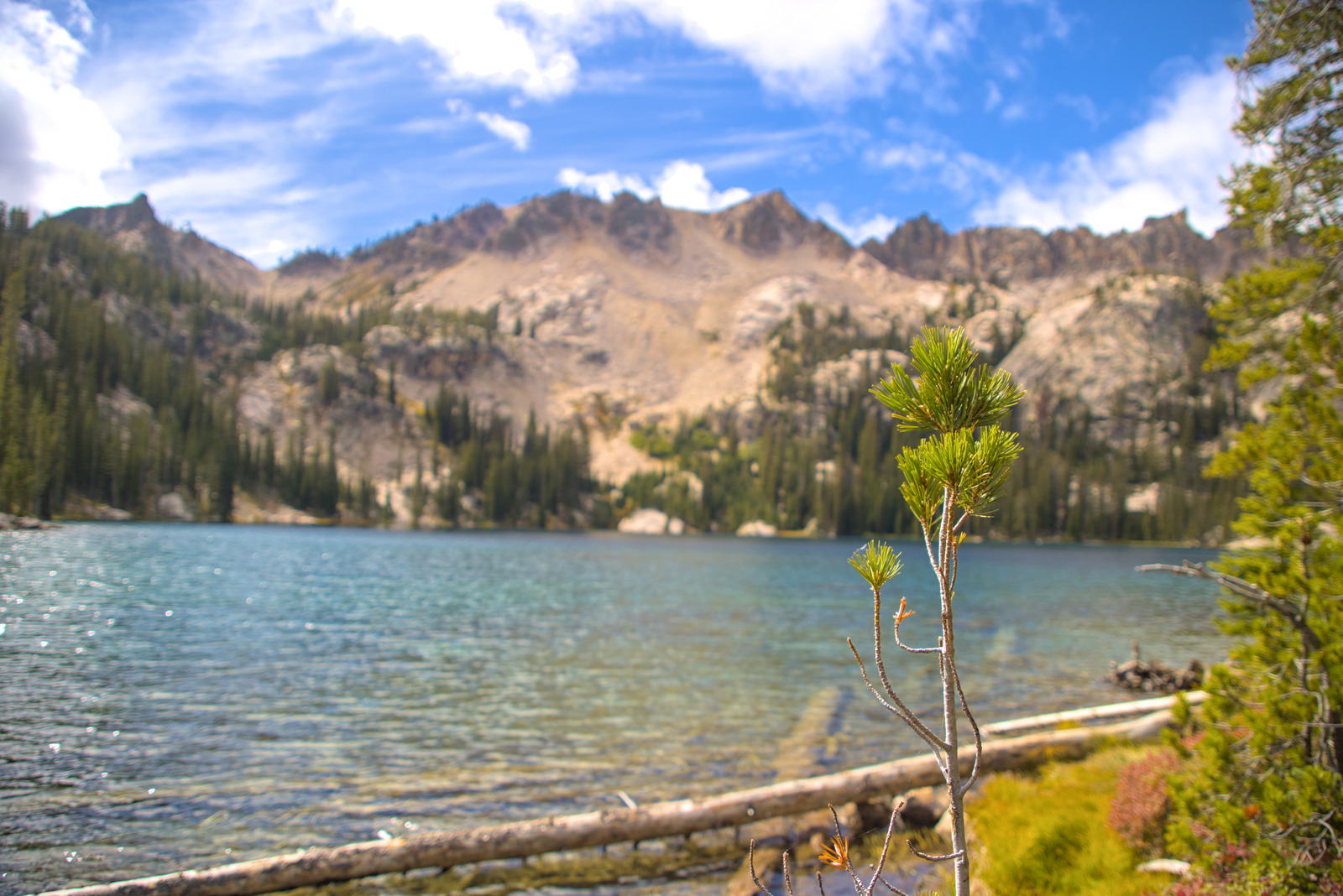
Thom wanted to continue hiking to Lake Kathryn, which was beyond the col in the upper left of the photo above. We left our tent and most of our supplies at the lake, taking lightly-loaded packs. There isn’t a trail to the lake, which meant a steep and steady climb through the forest and, eventually, up the talus. Climbing up mountains is trivial for Thom but exhausting for me, so I told him to go on while I stayed on a large rock outcropping. He pushed on. I enjoyed the warm sun and a magnificent view above the lake.
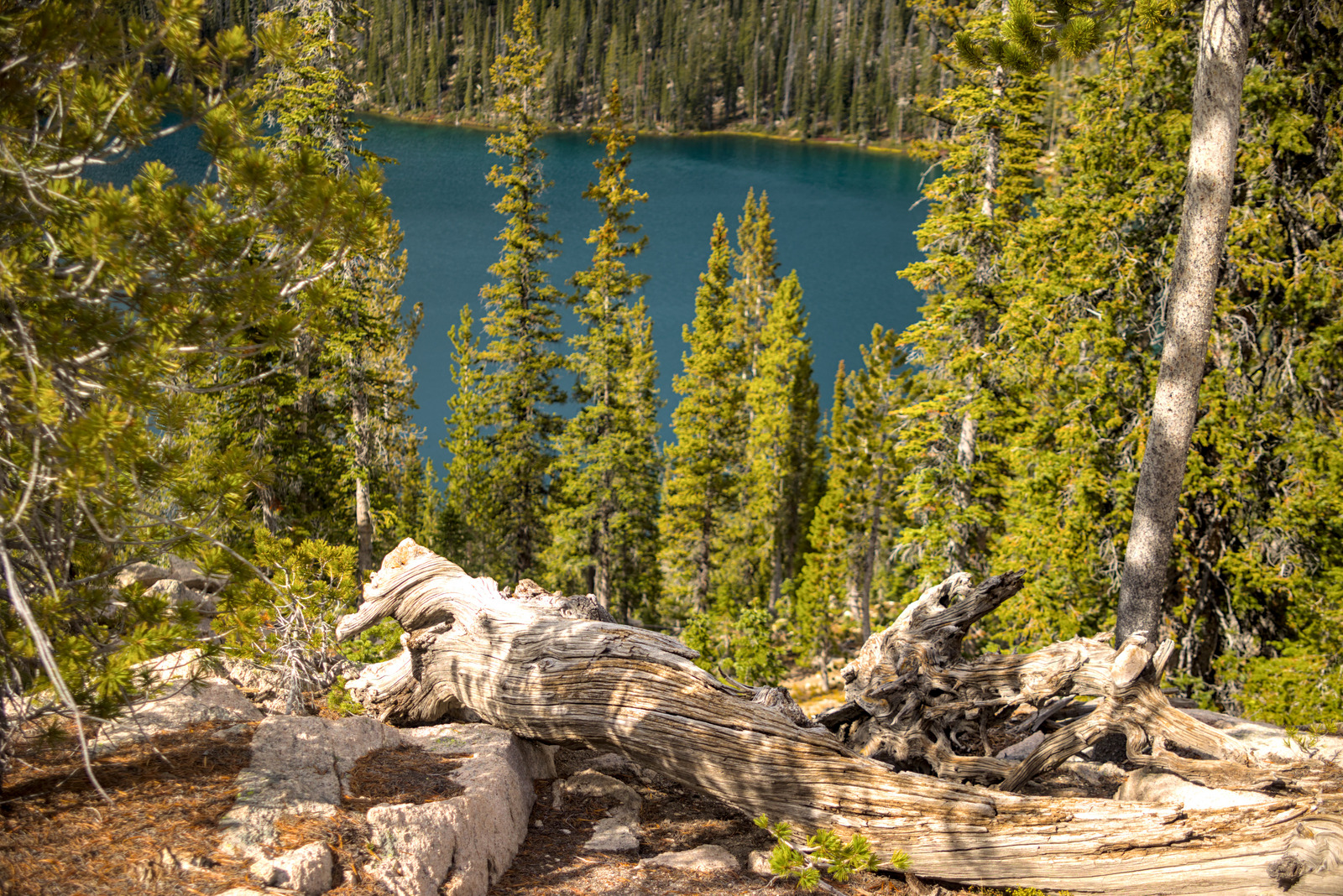
I was there for perhaps an hour, and it was a great opportunity to reflect on the majesty of the wilderness around me. I love the feel of being outdoors, far from the worries of civilization, hearing the birds and the squirrels, smelling the pine, watching the clouds scurry across the sky. Thom crested the ridge and looked down on Lake Kathryn but decided not to continue, as darker storm clouds were rolling in. Indeed, it began to rain: lightly at first, but then in earnest. I made my way back down to our tent, and he showed up shortly thereafter. We listened to the rain pelt the tent.
Eventually the clouds gave way a bit, and the setting sun sprinkled some pink across them with its last light.
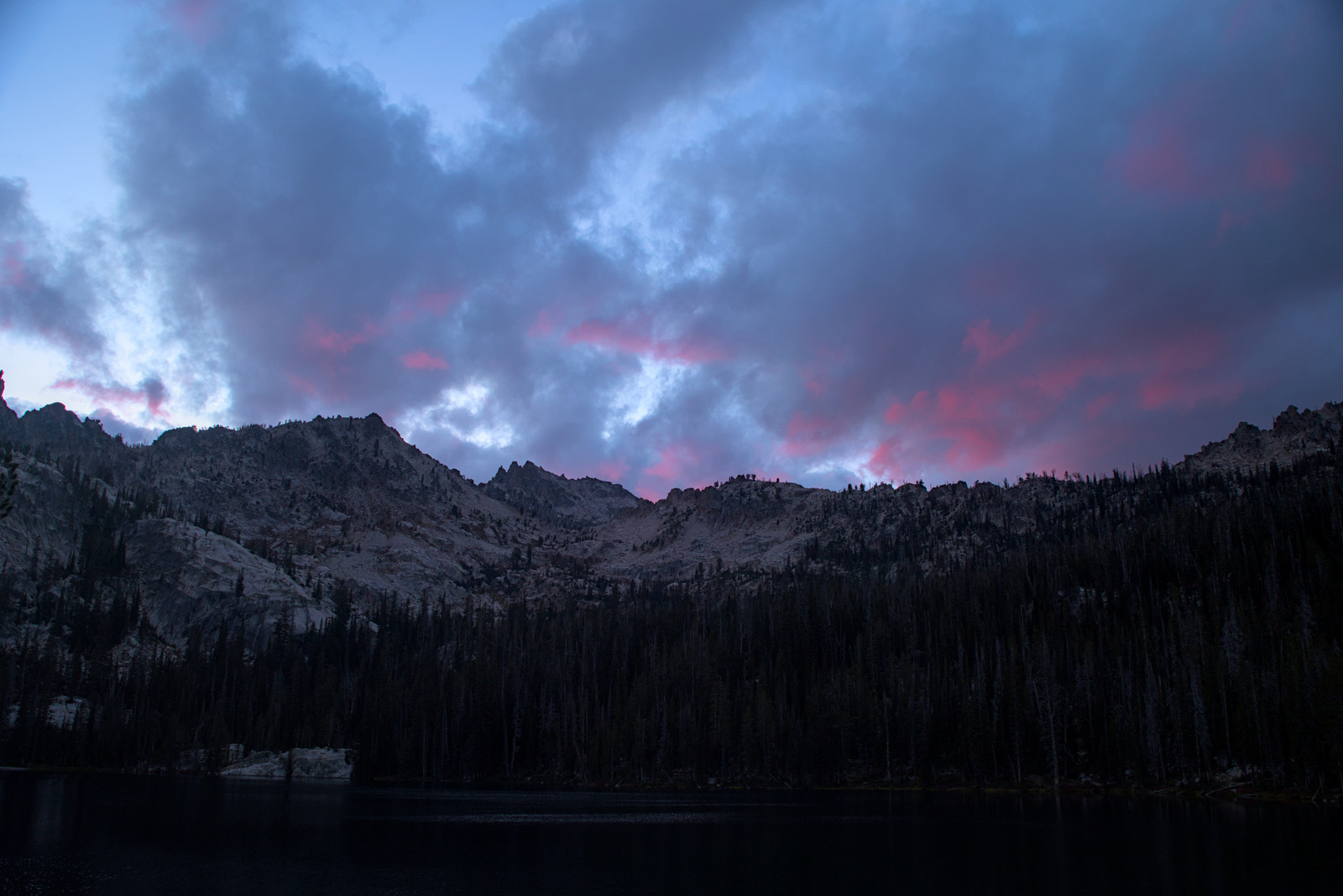
That night was even colder; our water froze and we woke up to frost. Again, our trusty sleeping bags were wonderful. I’d commented earlier in the trip that I’d love to see a crystal blue sky and a perfectly still lake, and my wish was granted that morning.

The water was like a mirror. In fact, here’s a shot looking down into the lake:
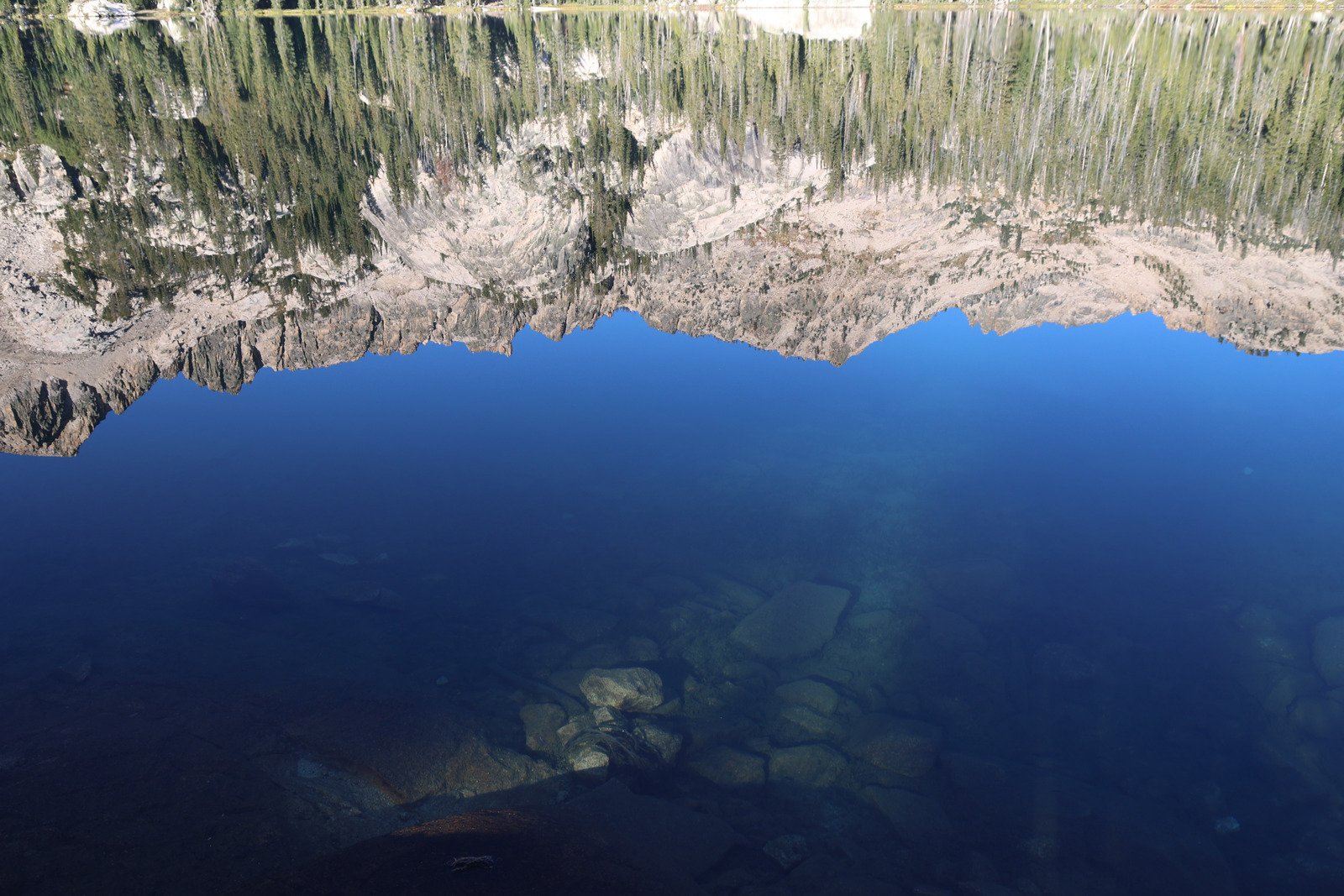
Everything was calm and quiet. A nearby meadow had frost across the grass, and a partially frozen pond.
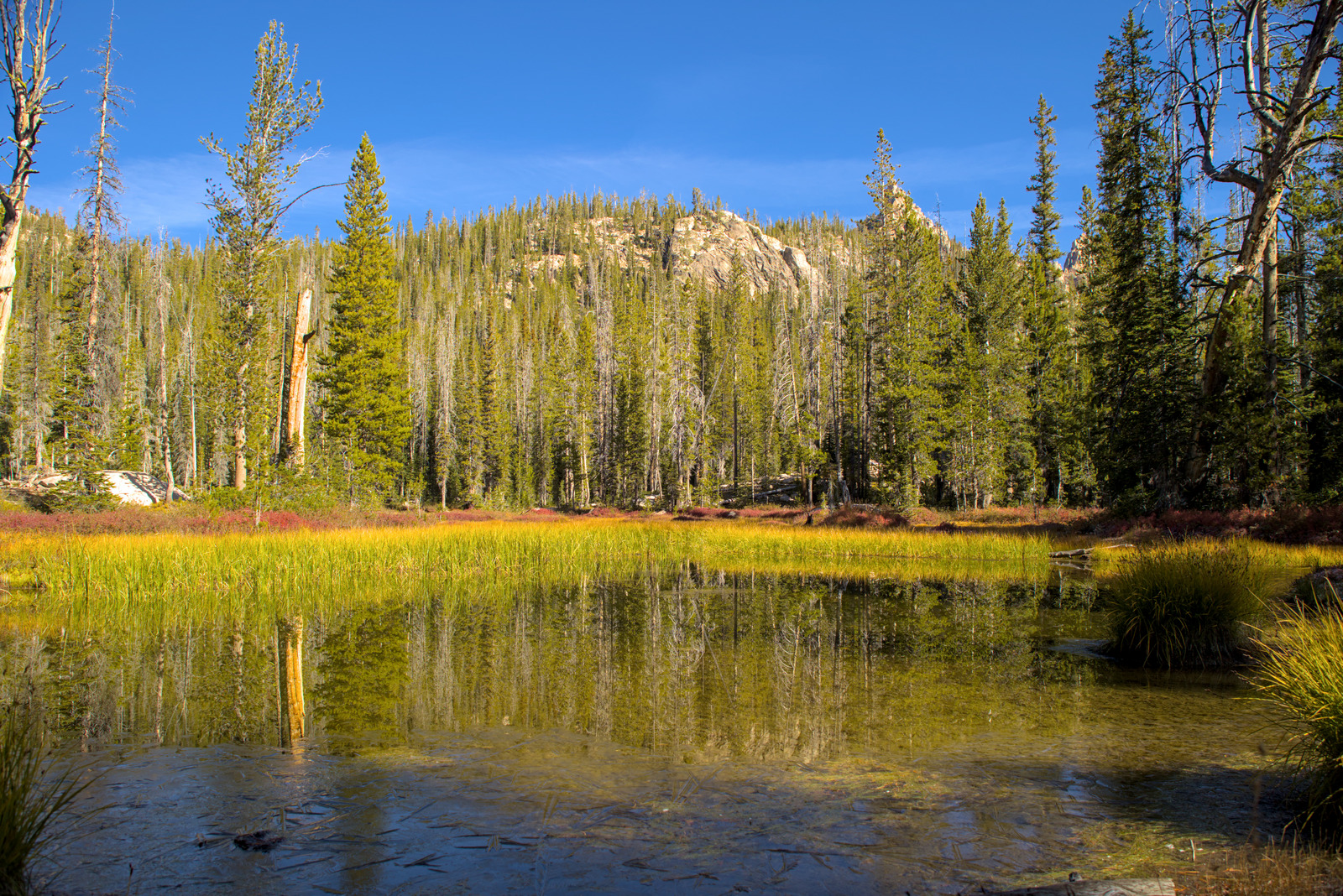
As the sun climbed in the sky, we decided to circumnavigate Alpine Lake and spend some time just enjoying the gorgeous fall day. We found a large rock overlooking the lake and watched the wind create patterns on the smooth water.

Although it was still cool– perhaps 50 degrees– the sun felt great.

It was wonderful to sit there, chatting about anything and nothing, with this incredible scenery around us.

As the day wore on, we finished our circuit of the lake and packed up camp. We headed out from Alpine Lake with one last fond look back.

Continuing along the trail, we were treated to some magnificent views of the valley. Since this area was carved by glaciers long ago, all of the valleys are gently curved.
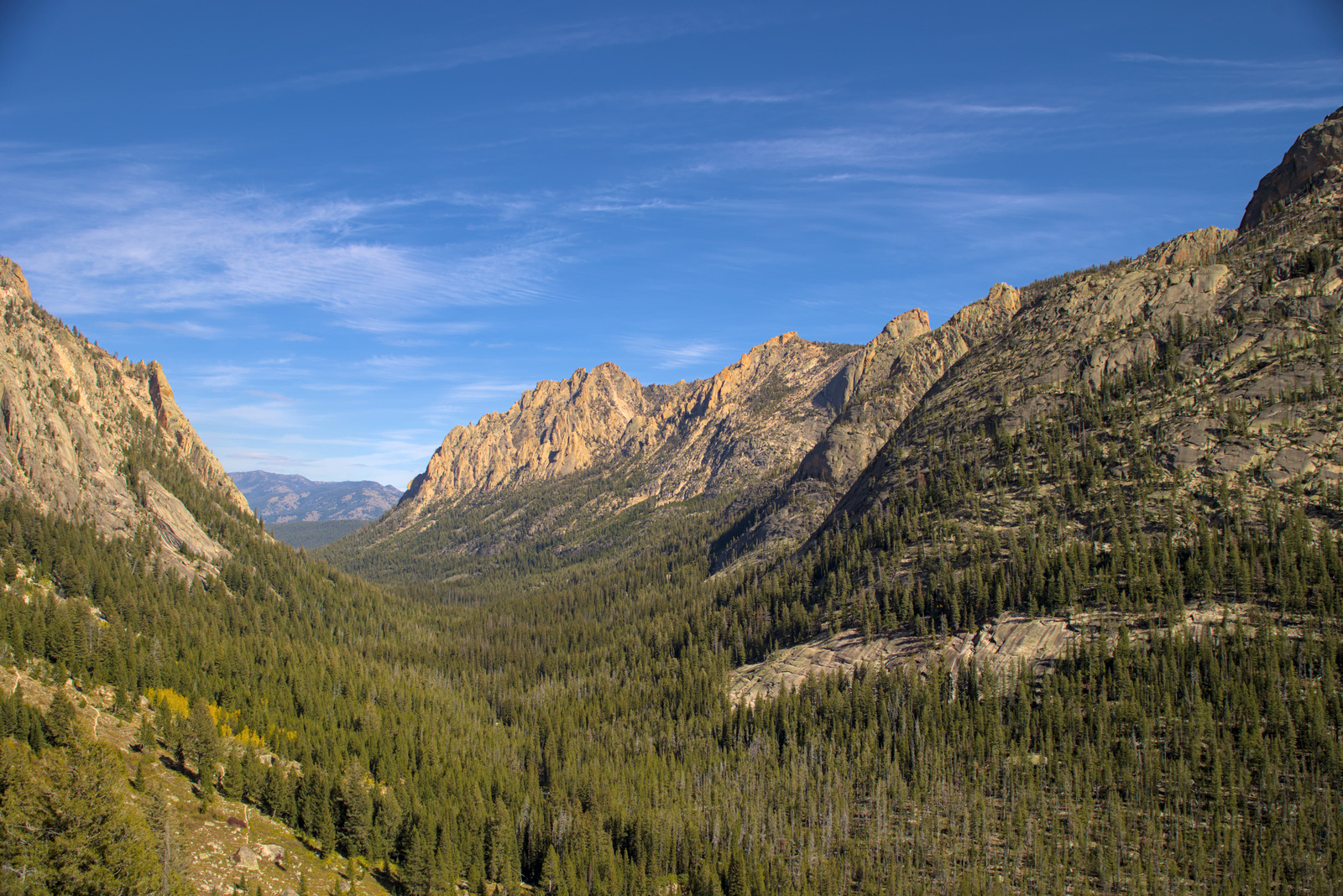
We both stopped often to snap photos. I’m sure Thom’s will look better, but I’m pretty happy with some of my shots.
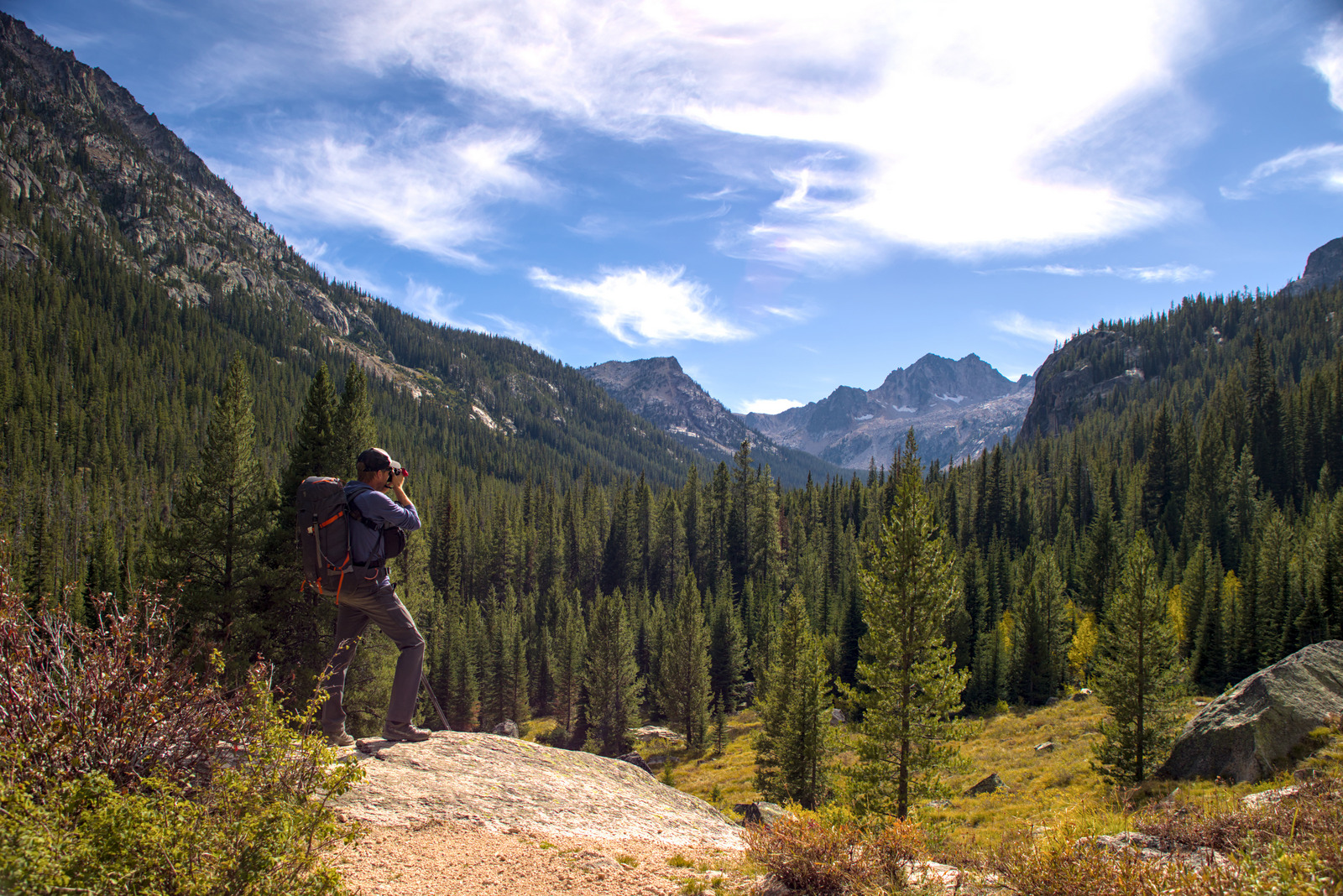
It’s still September, so the fall colors haven’t really peaked, but at times we were treated to a splash of yellow or red. Here’s a lonely aspen in the midst of its coniferous neighbors:
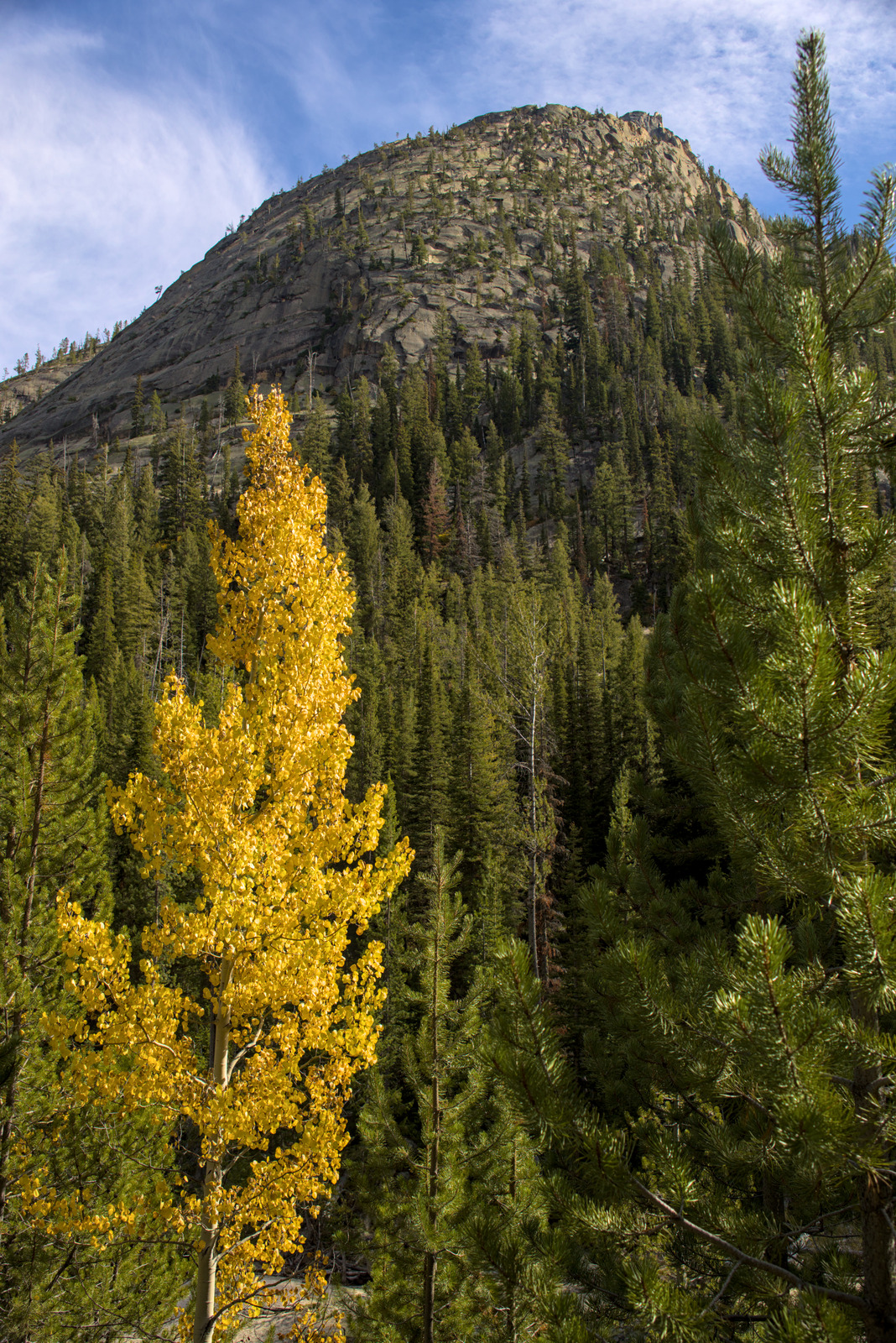
And here’s a fiery orange tree:
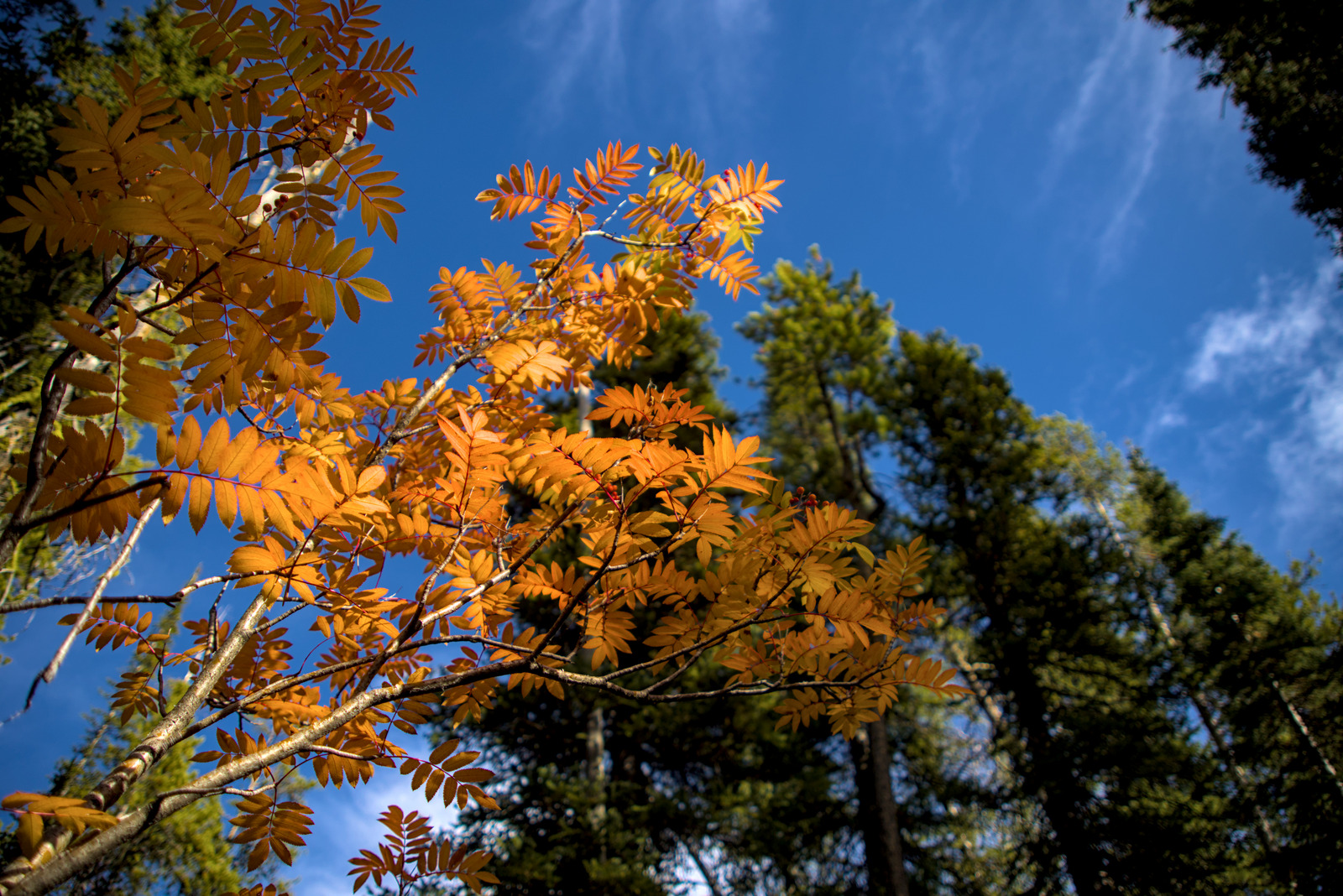
We headed for a campsite at Lily Lake, but about a quarter-mile shy of the lake we found a great spot to pitch our tent. It overlooked Redfish Lake, and we were treated to a slow sunset as we made dinner and settled in for the evening.
The next morning was cold again, and Thom spent some time watching the light and nursing his cup of coffee.
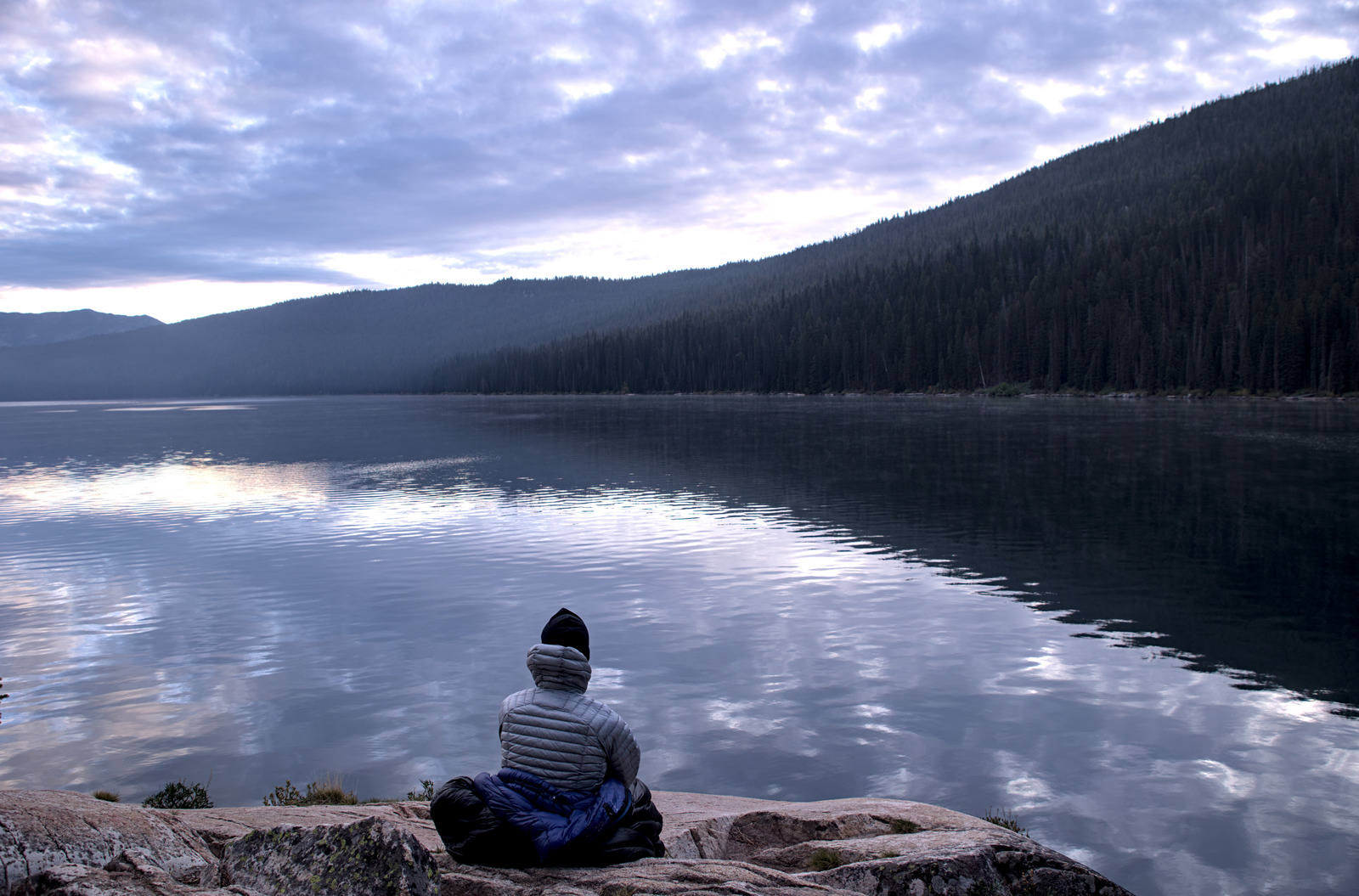
Although it wasn’t as clear or still as the other morning, there’s still an incredibly peaceful feel as the sun rises and everything wakes up for the day. Redfish Lake didn’t disappoint.
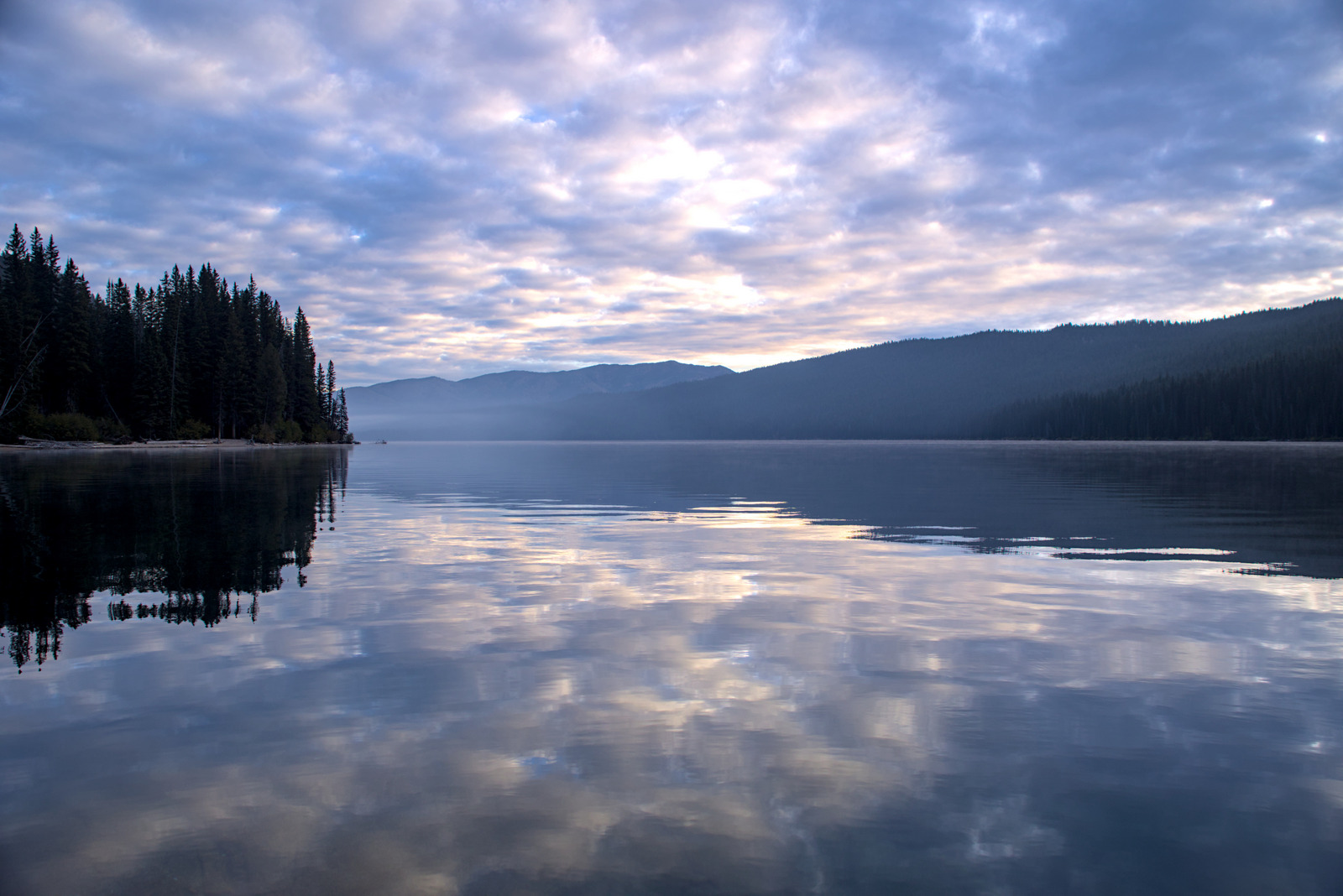
Hefting our packs for the last time, we made our way back to Stanley where we parted ways: him to Washington and me to Montana. As always, it was a great time and a chance to enjoy the beauty of the outdoors and the company of my favorite brother.

Thanks for another amazing fall trip, Thom!

